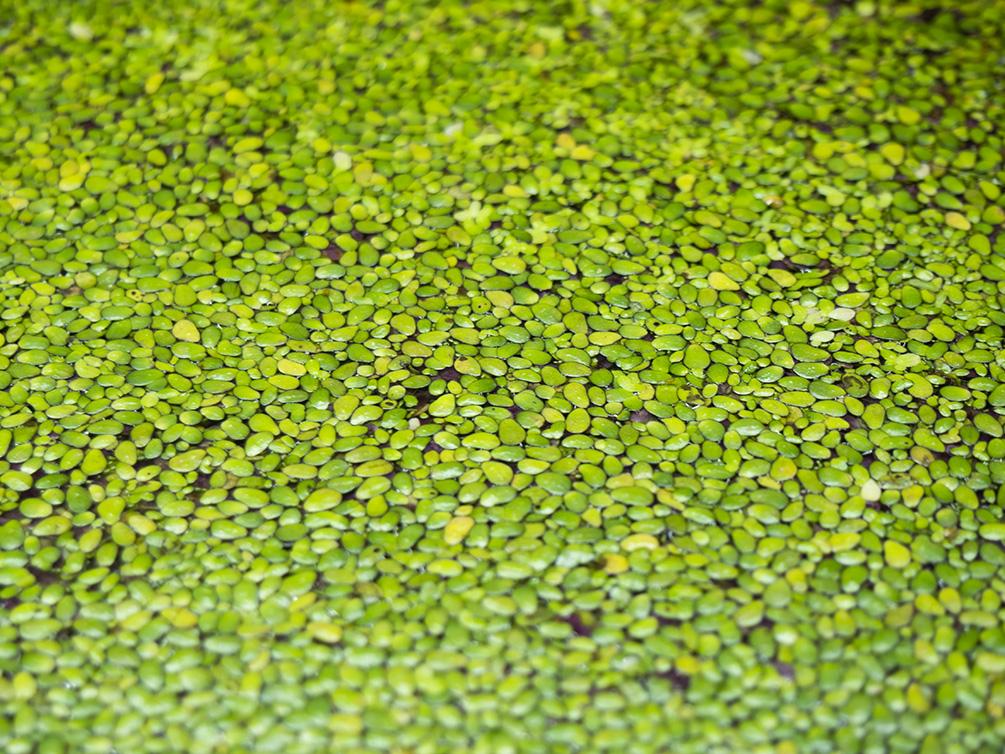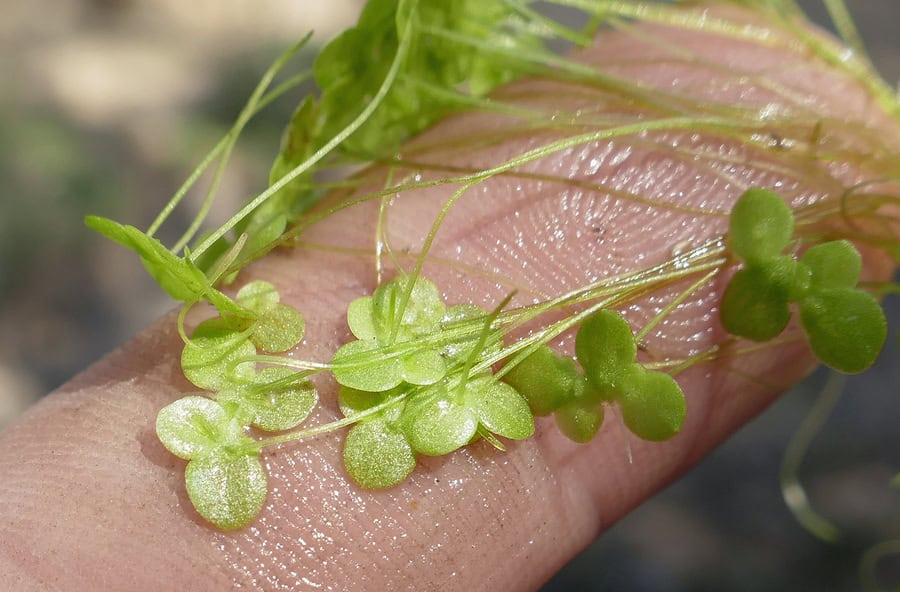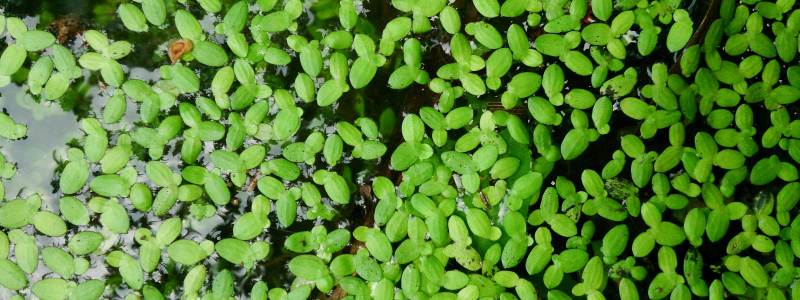Common Duckweed
weed identification
Lemna minor is a free floating freshwater aquatic plant. It can have one, two, three or four leaves with each having a single root hanging in the water. The root is 1–2 cm long. Leaves are oval, 1–8 mm long and 0.6–5 mm broad, light green, with three (rarely five) veins and small air spaces to assist floatation.
Stationary and slow-moving water bodies, especially where nutrients are high. E.g. ornamental ponds, fish ponds, dams, irrigation dams.
It reproduces mainly vegetatively by division. As more leaves grow, the plants divide and become separate individuals. Rarely does the plant reproduce sexually. Flowers are rarely produced (usually in winter) and measure about 1 mm in diameter and are white in colour.
Birds are important in dispersing L. minor to new sites. The sticky root enables the plant to adhere to the plumage or feet of birds and can thereby colonise new ponds.
Lemna minor has been shown to remove heavy metals like lead, copper, zinc and arsenic very efficiently from waters with non-lethal concentrations. Harvested plants from uncontaminated waters can be used as soil amendment, compost material or protein source for livestock.
What does Common Duckweed look like?
Disadvantages of Common Duckweed
Full coverage of a pond or dam by Duckweed can cause significant problems such as:
- Stopping oxygen diffusion
- Shades out all submerged vegetation preventing further growth and causing death
- Causes fish and other aquatic life death
- Provides breeding ground for mosquitos
- Changes the water chemistry to favour harmful algae and bacteria
- If left untreated, Duckweed can render the water unusable and make treatment far more costly than if initially dealt with
treatment
Orange Oil – Designed to treat free floating organic matter. This treatment is best applied when 20% of the surface water is still visible, and is intended to be used over multiple treatments (day 1, 2 and 4).
AQ200 Aquatic Herbicide + Wetting Agent – Chemical Herbicide designed to kill free floating weeds quickly. Use on mild to severe infestations.
Aquatic Weed Skimmers – Physically remove free floating weeds. Use on mild infestations or to aid herbicide treatments.
Aquatic Harvesting – Large amphibious machine that clears the surface of floating aquatic weeds. Book this service for severe infestations or for larger water bodies.
prevention options
Surface Clear – Creates a protection barrier on the surface of the water to limit plant replication and new infestations forming. Use on its own or after herbicide treatments.
Aerating Fountains – Reduces the severity and likelihood of aquatic weed infestations. Use in any body of water.







